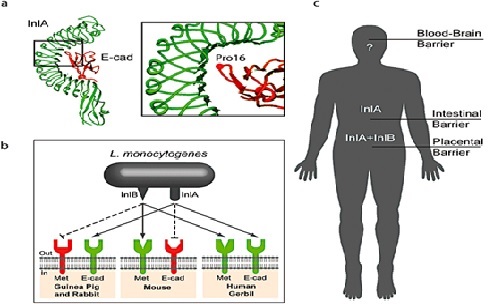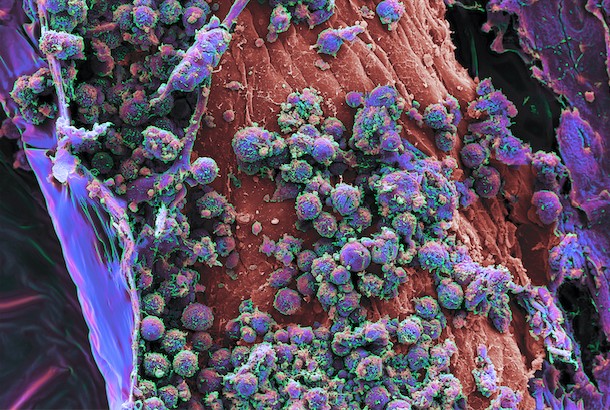Six Numbers Predict Life-Threatening Covid-19
Researchers at Rutgers University have introduced PLABAC, a machine-learning model aimed at predicting severe cases of COVID-19 in hospitalized patients. By utilizing patient age and data from five routine tests, this model is designed to enhance patient prognosis and assist in the allocation of hospital resources. Noteworthy for its accuracy and user-friendly nature, PLABAC has been validated across diverse patient groups. The researchers plan to integrate it into medical apps and electronic health records, offering a valuable tool for healthcare professionals in managing COVID-19 cases.

Figure 1.Predict Life-Threatening Covid-19
Enhancing Hospital Resource Allocation and Patient Prognosis
Figure 1 Shows Predict Life-Threatening Covid-19 "Accurate prognoses are extremely valuable," emphasized Payal Parikh, an associate professor at Robert Wood Johnson Medical School (RWJMS) and coauthor of the study published in the journal mBio. The researchers at Rutgers recognize the importance of enabling patients to comprehend the potential trajectory of their condition while still being in a position to make informed treatment decisions. Additionally, accurate prognoses assist hospitals in efficiently allocating resources by anticipating patient needs. By enhancing prognostication, early treatment initiation becomes possible, leading to improved patient care outcomes.[1] The Rutgers team initiated the development of a COVID-19 prognostication model using machine-learning software and medical records from 969 individuals hospitalized with the virus early in the pandemic.
Analysing Data and Using It Practically
David Natanov, lead author of the study and a fourth-year student at Robert Wood Johnson Medical School (RWJMS), explained the process of developing the COVID-19 prognostication model. The team gathered an array of data points from each patient, including lab results, demographics, vital signs, and comorbidities. Through a series of machine-learning models, they initially created a model with 77 variables. Recognizing the practical constraints of entering 77 data points, the researchers used analytical tools to identify the 10 most predictive variables related to the disease. Subsequently, artificial intelligence was employed to assess these variables in various combinations, resulting in the development of two efficient models consisting of just six data points each—patient age and results from five common lab tests, which are routinely collected by every hospital.
Introducing the Model of PLABAC
The most accurate model developed by the researchers, named PLABAC, is an acronym derived from the first letter of each component variable: platelet count, lactate, age, blood urea nitrogen, aspartate aminotransferase, and C-reactive protein. [2] To validate PLABAC's predictive capabilities beyond the initial sample of 969 patients, the researchers successfully applied it to project outcomes for an additional 7,901 patients hospitalized in the pre-vaccination period and a third group of 1,547 patients from the post-vaccination period.
The robust results in patients post-vaccination demonstrate PLABAC's ability to forecast the prognosis of individuals with COVID-19 variants beyond the original virus that affected the initial patient group. While other studies have utilized patient records to create COVID-19 progression models, the Rutgers team believes they are the first to rigorously validate their model by successfully testing its predictive accuracy across multiple patient groups.
Future Integrations and Usability
The researchers believe their model, PLABAC, offers a significant advantage in terms of ease of use compared to other models. As most hospitals routinely collect all six data points used in the model for COVID-19 patients, the only additional step is entering these six variables into the formula. The study team aims to further simplify this process by collaborating with MDCalc, an app commonly used by clinicians. They envision integrating the model into the app, allowing users to obtain a prognosis simply by inputting the six numbers.
Additionally, the team expresses a desire to collaborate with Epic, a major electronic health record software provider, to incorporate their model into the software's suite of predictive tools. This integration would automate the process by extracting the necessary numbers from lab results, eliminating the need for manual data entry.
References:
- https://scitechdaily.com/6-numbers-predict-life-threatening-covid-19/
- https://medicalxpress.com/news/2023-09-life-threatening-covid-.html
Cite this article:
Janani R (2023), Six Numbers Predict Life-Threatening Covid-19, AnaTechMaz, pp.207















